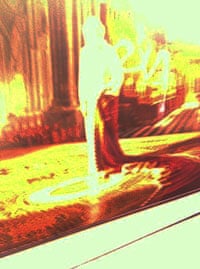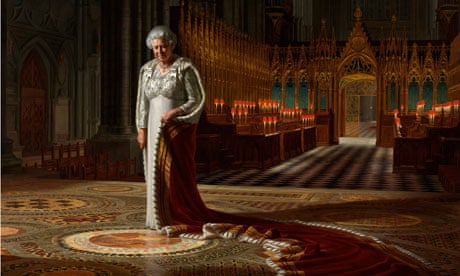The spray painting of a portrait of the Queen in Westminster Abbey shows why republicanism is a dead cause in Britain. The violence shown below in the best photo available – a man has apparently tried to write "Help" across the painting – is probably the most effective piece of royal iconoclasm perpetrated in Britain since the Sex Pistols had a go at the Queen in Silver Jubilee year. So is this attack on a fairly ordinary work of art a subversive act of lese majeste? No, it just reveals how much the monarchy is loved.

To see why that is, ask yourself: why did a Fathers4Justice campaigner pick this particular painting to attack? It is not exactly a national treasure. Yet the man who decided that Ralph Heimans's picture of the Queen standing on the colourful medieval pavement of the abbey where she was crowned was a good candidate for a bit of graffiti, made a wise choice. He has hurtled himself and his cause higher up in the news than he might have if he just trashed a Poussin in the National Gallery.
This is because the person in this case matters more than the painting. There's something primitive about our attitude to royal portraits; they are tokens of the ruler herself. Just like Jamie Reid, who in 1977 committed an act of dada on the Queen's portrait for the cover of the Pistols' God Save the Queen, this protester has chosen to defile something the nation holds sacred. In Britain, there is nothing more sacred than Her Majesty. That's why this iconoclasm is a shock: not because the royal image is vulnerable, but because it really does feel outrageous to desecrate the Queen's image.
Accidentally, this assault reveals an underlying truth about Britain and the monarchy. Iconoclasm only works when the image you attack means something. It meant something for 17th-century Puritans to smash the windows of Westminster Abbey with their religious scenes, because these stained glass windows carried a powerful charge of the sacred. In breaking them, radical Protestants made a statement about the revolutionary nature of their faith and their repudiation of "popery". But if someone walked into Westminster Abbey today and attacked a religious image, the act would have little meaning: it would be classed as straightforward criminal damage. Instead, the frustrated father went to the Chapter House, where this painting has recently been hung, and attacked the Queen by proxy.
That got him noticed. As an art lover, I welcome the fact that he didn't damage a great painting in a museum. Perhaps here is a new function for royal portraits – to provide a safety valve for rage and save more important works of art from destruction.
Yet the reason this painting, its attacker and Fathers4Justice have hurtled into the headlines is that 60 years ago a young woman was crowned Queen in the very abbey where the damage has been done. As she approaches the end of her reign, the Queen is handing on a monarchy that has never looked so strong. This bit of political theatre is a backhanded compliment to that regal achievement.

